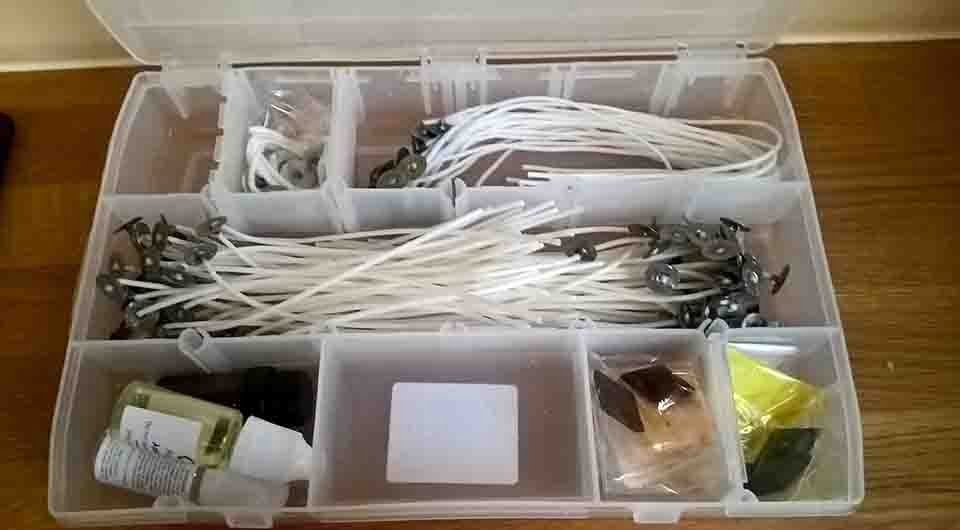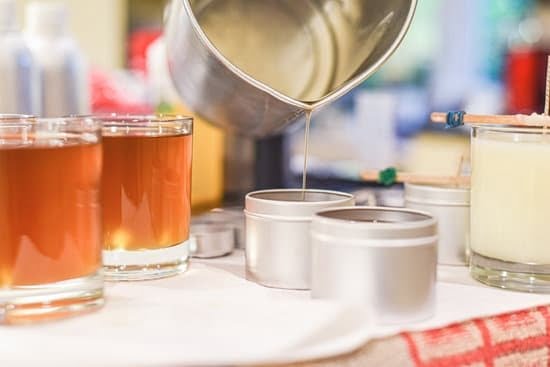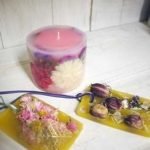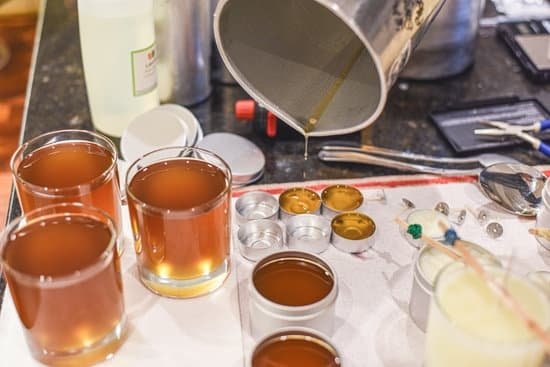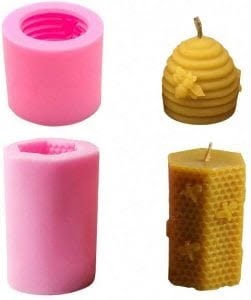Creating Blends With Essential Oils for Maximum Fragrance Strength
When it comes to creating the most fragrant and strong-scented candles, essential oils are your best choice. Essential oils are extremely potent and can be used in small amounts, creating longer lasting candle scents. For maximum fragrance strength and blending potential, create a blend of several different essential oil scents combined. These combinations will give you endless possibilities as certain aromas will complement each other while others may clash or overwhelm the mix.
When creating a candle scent with essential oils, always practice safety first – protect yourself from skin sensitivities by wearing gloves during the mixing process, and work in a well-ventilated area with no open flames or spark sources nearby. To measure out your essential oil scents for blending with accuracy for best results use an eye dropper for smaller doses or a measuring spoon for larger amounts. Experiments with ratios of different blends will also help you determine which combinations work best together in terms of fragrance plus burning time duration; saving wasted material due to unsatisfactory results. Lastly, store any unused blends in a glass container with a tight fitting lid away from heat sources and direct sunlight to preserve their potency until required again.
Safety Precautions When Working With Scented Oils
When working with scented oils for candle making, it is important to take safety precautions. Always use protective equipment such as gloves and long-sleeved clothing when handling the oils. Make sure to work in a well-ventilated area because the strong scent of the oils can be overwhelming in a small space. Be cautious not to spill any oil since some essential oils are flammable and hazardous if they come into contact with an open flame. Additionally, always store oils away from any candles and heat sources. When blending different types of essential oils be aware that some have stronger and more potent smells than others. Ensure to mix the correct ratios for a desired blend of aroma, using too much of a strong scent can result in an overpowering effect and may discolor the candle wax. Lastly, before using essential oils for candles it is important test them beforehand then make adjustments as needed for a desired intensity or combination of aroma.
Choosing Colors to Compliment Your Scented Oils
When choosing colors to compliment your scented oils for candle making, there are a few things to consider. The first is the effect you want to achieve. While some people may prefer a subtle look, others may opt for something brighter and bolder. You should also think about how different colors can complement one another and how they’ll interact with the scent of the oil. For example, using blues and purples with lavender-scented oils could bring out the cool tones in the scent and make it even more calming. Warmer colors like pink or red may intensify fruity scents and make them seem sweeter. Additionally, you should make sure to pick colors that match the room or space where the candle will be used. If you are creating a more lavender-scented wax, then pairing that warm purple tone with light pinks could create a relaxing atmosphere in any room. In general, just keep in mind what kind of mood you want to set when selecting colors for your candles!
Looking At Popular Brands of Scented Oils
When it comes to creating beautiful and fragrant candles, it is essential to have the right types of scented oils. To create a truly special candle, you need to consider the quality and price point of the various scented oils available in your area. Popular brands of scent oils have stood the test of time, making them reliable options that come in all sorts of different types, fragrances, and strengths.
The Wickels Candle Company has a wide variety of highly concentrated scents perfect for candle making. These include a pleasant selection of florals such as cherry blossom and jasmine, fruit blends such as strawberry-kiwi and mango-citrus, and even some delightful holiday smells like apple cinnamon pie and gingerbread cookies. All the perfumed oil selections are free from any synthetic chemicals or additives, making them ideal for those with allergies or sensitivities.
Another trusted name in candle making is DollyCandle Co., whose selection includes powerful rates like French Lavender, Sweet Pea & Vanilla, and Indonesian Teakwood Spice. Not only do these oils come in realistic-smelling fragrances from around the world but they also boast long lasting results when used in your candles. Plus they’re affordable too! Both companies offer a wide range of potent scent combinations perfect for creating luxurious smelling candles.
Lastly there is Silver Candles’ offering which features intense aromas such as Pomegranate Fig & Cypress or aged leather with white sandalwood – both phenomenal scents sure to please any nose! These refined perfume oils are perfect not just for filling your home with delightful aroma but also adding sophistication to your candle melting projects.
No matter what type or strength of scent you prefer there is something out there that will match your needs perfectly! When shopping for strong scented oil for candle making make sure to browse popular brands known for their quality products. From all natural options from Wickels to more complex choices from DollyCandle Co and Silver Candles, be sure to find whatever you require for your next homemade creation!
Exploring Natural Sources of Scented Oils
Scented oils for candle making can create compelling aromas and be a great way to make your candles stand out from the crowd. It is important to remember that not all scented oils are created equal, and many commercial versions may leave much to be desired when it comes to scent intensity or longevity. Fortunately there are some excellent options for sourcing naturally-scented oils for candle making.
One of the most popular natural sources for scented oils are essential oils. These highly concentrated extracts provide powerful and long lasting fragrances that add an elegant touch to any candle. Essential oils range in scent depending on type and quality, and come in varieties like lavender, sandalwood, patchouli, peppermint, cedarwood, and more. Each oil may require varying amounts when blending with other ingredients, so thorough research should be done prior to using essential oils to ensure proper measurement is taken into account. Additionally essential oil-based candles often require higher melting here points than synthetic counterparts, meaning that some waxes may need additional additives such as paraffin or beeswax
Another fantastic option when looking for natural sources of scented oils includes hydrosols (aka floralwaters). These scented waters are derived from already distilled essential oils at a far lower concentration levels than their pure versions – making them both – cost effective alternatives for those who want less potent fragrance in their creations. Common hydrosol species include rose petals, jasmine petals and chamomile leaves amongst others – each providing diffusers with lightly sweet aromatic profiles that serve as gentle yet equally striking alternatives when compared with other bolder fragrant formulations available through essential oil cultivation routes.
How to Maximize Fragrance Release
When you are making candles with strong scented oils, there are certain techniques that can be used to maximize the fragrance release. One of the most important things to do is to ensure that your wax or oil blend is fresh and of high quality. This means buying scent oils specifically meant for use in candle-making and avoiding any essential oils or fragrances purchased at the local store. Secondly, always make sure that you use more than the required amount of scent suggested by manufacturers so that the strength of it will not reduce when heated in the process of making a candle. Additionally, you can try adding your fragrances near the end of your candle-pouring process as allocating longer time or a higher temperature into your melting pot may lead to an unwanted aroma. Finally, ensuring proper ventilation around work areas helps keep smells clean and prevents them from becoming overwhelming during production.
Tips for Enhancing Scented Oils For Different Seasons
Using scented oils while making candles is a great way to create unique and beautiful candles. But how do you make sure your scented oil candles are beautifully fragranced year round? Here are some tips to help enhance your oil scented candle experience:
• During the summer months, choose light and breezy fragrances like citrus, floral, or marine oil. These can provide an energizing scent that won’t be overpowering in warmer weather.
• In the fall, try pine or woodsy notes for a cozy and refreshing atmosphere. If you’re feeling daring, combine multiple types of woodsy scents to create a complex aroma that brings out the best in each element.
• In winter months, embrace the holidays with warm and spicy aromas such as gingerbread, nutmeg, vanilla, or cinnamon oils. Add in hints of orange or cranberry for an even more festive touch!
• Come springtime use energizing fragrances like apple blossom or jasmine to bring balance back into your home after months of heavy snuggling under blankets. Try combining spices such as cardamom with fruity and floral essential oils to bring out their respective nuances even more.
Alternatives to Scented Oils for Candle Making
Candle making doesn’t have to rely solely on scented oils. There are a range of alternatives that can be used in place of scented oil to add fragrance and ambiance to a candle. Many natural elements such as herbs and spices, flowers, fruits, resins, and roots all provide unique aromas and leaves a special touch in candles. Herbs like rosemary and lavender can be added to ground wax melts or poured into molds prior to pouring the hot wax for an aromatic surprise. Flower petals like chamomile, calendula, and lavender all work great for embedding petals in layers of wax or suspending them in the middle of container candles. Fruits like citrus peels can be placed on wicks directly before melting wax is poured into jars for a pleasant scenting combination. Resins from plants such as pinion pine cones, sandalwood bark and fallen branches from Cedars provide woodsy aromas with deeply grounding fragrances. Roots also create wonderfully therapeutic scents when brewed together with other botanicals into ardent baths or tinctures or added dried forms directly into melted waxes before blending colors. With just a little creativity you can make some beautiful scented candles without the use of oils!
Trial Runs Before Making a Large Batch of Candles With Scented Oils
Before making a large batch of candles with scented oils, it is important that you conduct trial runs first. This allows you to ensure that the scent will come out in your candle correctly and that any issues are identified and corrected. For example, if the scent is too strong in your test candle, you can adjust the oil ratio before making a whole batch of candles. Additionally, by testing small batches of your candles with scented oils, you can assess which strength and ratio of essential oil provides the best result while still allowing wicks to burn cleanly without smoking or clogging. Additionally, you can use this time to experiment with different types of fragrances and home fragrance blends – there are endless possibilities when it comes to scents! A trial run also ensures that the products created have consistent quality, thus avoiding disappointments such as subpar results or lack of return customers. In conclusion, conducting trial runs for candle making with scented oils is an invaluable tool for ensuring success.
Researching Regulations and Laws Around Scented Oils For Candles
When planning to create scented candles using strong scented oils, it is important to research and understand any regulations and laws around the use of these oils. This would include understanding the rules and regulations set out by the Cosmetic Regulatory Agency (CRA) regarding the labeling, composition and safety of candle-making supplies. It is essential to investigate safety protocols for handling powerful fragrance oils when creating scented candles, in order to make sure that the products being used are within regulatory requirements. Other considerations for researching involve mandates for flammable materials such as learning about flashpoint temperatures which would help ensure that you are using the proper oil in a safe way. Additionally, one should research any applicable laws or restrictions imposed by local governments such as limits on smell detectable from outdoors or temperature limits during storage of candle-making supplies. Knowing all these regulations is crucial in order to guarantee that the final product made with scented oils safely meets legal compliance requirements.

Welcome to my candle making blog! In this blog, I will be sharing my tips and tricks for making candles. I will also be sharing some of my favorite recipes.

